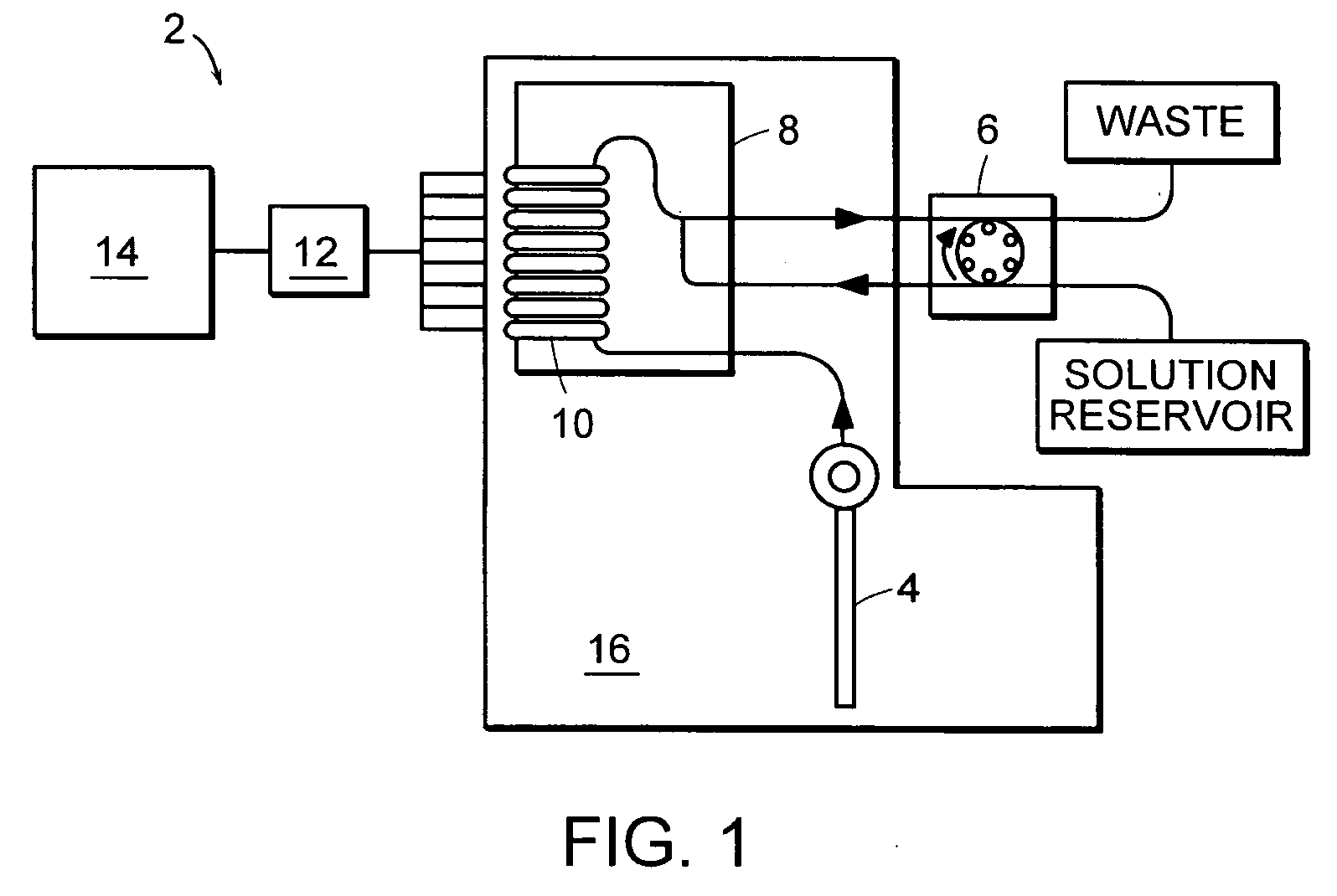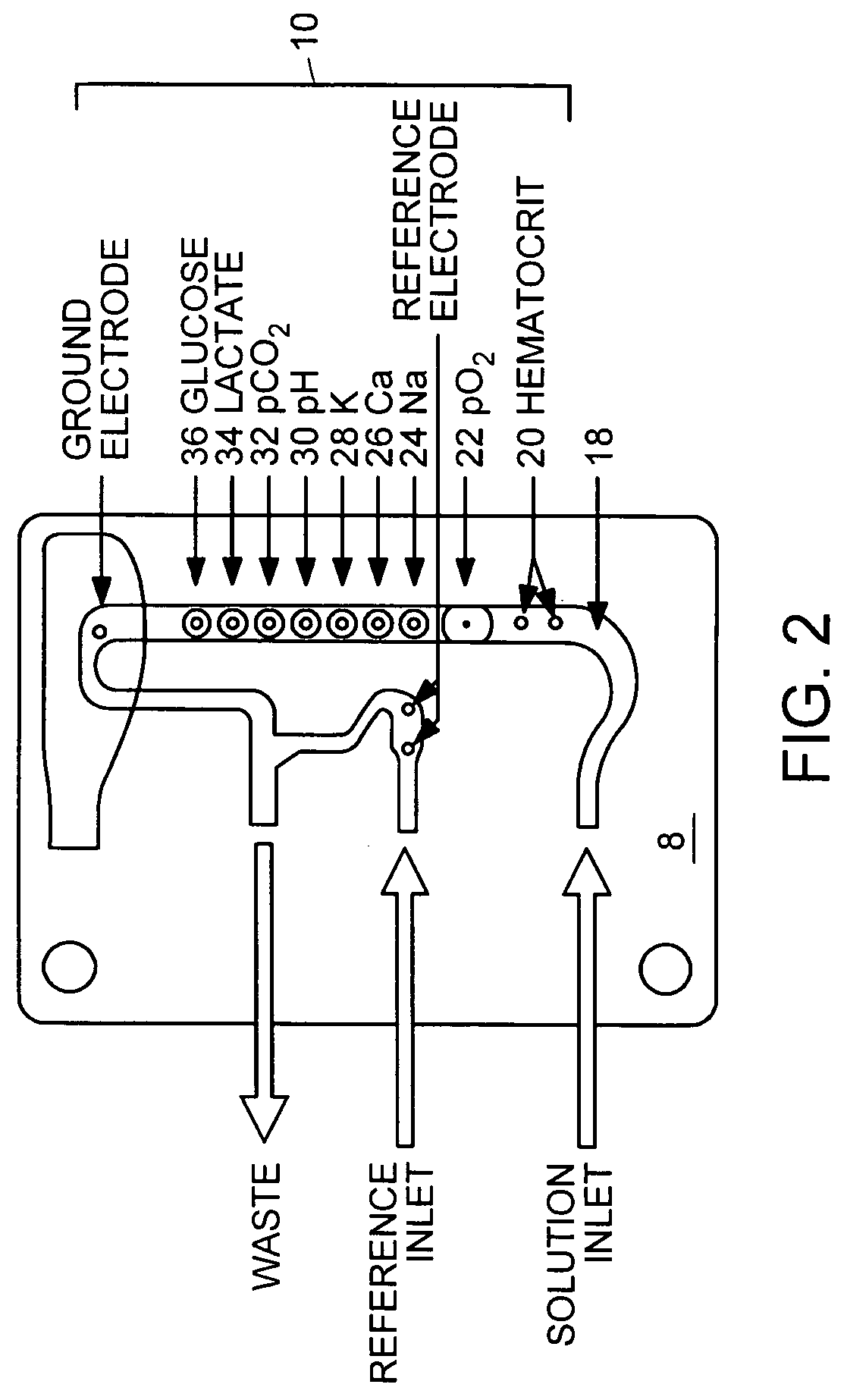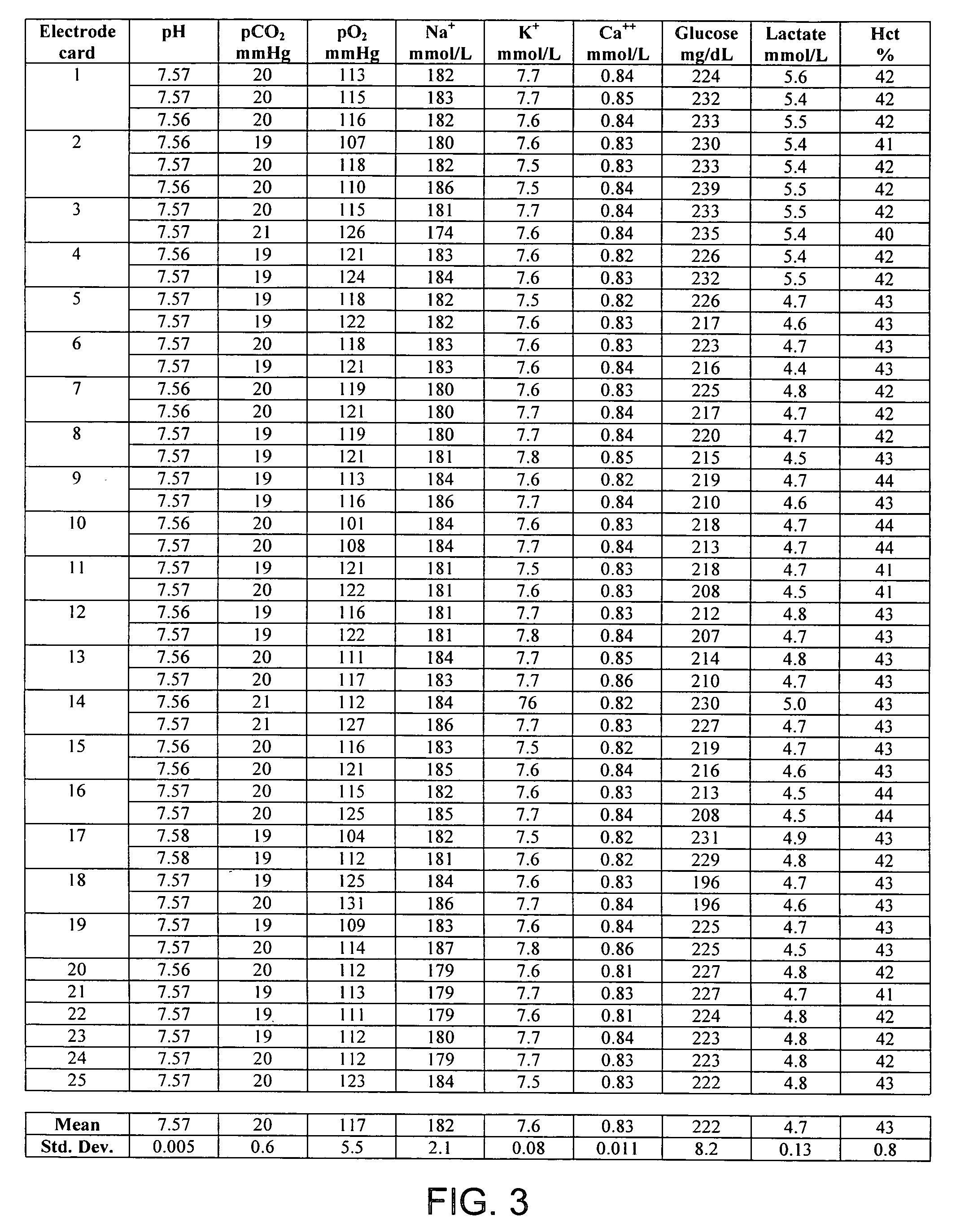Multi-analyte reference solutions
a reference solution and analyte technology, applied in the field of multi-analyte reference solutions, can solve the problems of difficult to formulate aqueous solution with physiological properties, relatively unstable blood products, and high cos
- Summary
- Abstract
- Description
- Claims
- Application Information
AI Technical Summary
Problems solved by technology
Method used
Image
Examples
example 1
[0048] A reference solution was formulated according to Table 1 below:
1 TABLE 1 Deionized Water 1.00 L HEPES buffer 100 mmol NaOH 75 mmol NaCl 80 mmol KCl 7.0 mmol CaCl.sub.2 1.00 mmol Chloline Chloride 1 mmol Glucose 12 mmol Lithium Lactate 4 mmol MIT biocide 2.0 mmol FD&C Blue No. 1 0.01 g FD&C Yellow No. 5 0.03 g PEG (MW 2000) 90 g Dextran (MW 10,000) 60 g Ethylene Glycol 90 g
[0049] The reference solution was introduced to a blood analyzer containing an electrode card equipped with sensors to detect pH, carbon dioxide (CO.sub.2), oxygen (O.sub.2), sodium (Na), potassium (K), calcium (Ca), glucose (Glu), lactate (Lac), and hematocrit (Hct). Three hematocrit values were obtained, along with three concentration values for each analyte. After the final measurement, the electrode card was replaced and the procedure was repeated with a new electrode card containing the same type of electrodes. In some instances, two measurements were recorded with each electrode card, and in others one...
example 2
[0051] A reference solution was formulated according to Table 2 below:
2 TABLE 2 Deionized Water 1.00 L HEPES buffer 100 mmol NaOH 66 mmol NaHCO.sub.3 20 mmol NaCl 68 mmol KCl 7.0 mmol CaCl.sub.2 1.00 mmol Chloline Chloride 1 mmol Glucose 12 mmol Lithium Lactate 4 mmol MIT biocide 2.0 mmol FD&C Blue No. 1 0.01 g FD&C Yellow No. 5 0.03 g PEG (MW 2000) 130 g Dextran (MW 10,000) 100 g Ethylene Glycol 70 g
[0052] To predict the room temperature stability of the solution, accelerated stability studies were performed as described below.
[0053] The reference solution was introduced to a blood analyzer containing an electrode card equipped with sensors to detect pH, carbon dioxide (CO.sub.2), oxygen (O.sub.2), sodium (Na), potassium (K), calcium (Ca), glucose (Glu), lactate (Lac), and hematocrit (Hct). Twelve hematocrit values were obtained, along with twelve concentration values for each analyte. The average of these values is reported in the time=0 row of FIG. 4.
[0054] Aliquots of the soluti...
example 3
[0058] A reference solution was formulated according to Table 3 below:
3 TABLE 3 Deionized Water 1.00 L HEPES buffer 100 mmol NaOH 44 mmol NaHCO.sub.3 20 mmol NaCl 58 mmol KCl 3.0 mmol CaCl.sub.2 2.00 mmol Chloline Chloride 1 mmol Glucose 3 mmol Lithium Lactate 0.8 mmol MIT biocide 2.0 mmol FD&C Blue No. 1 0.05 g PEG (MW 2000) 90 g Dextran (MW 10,000) 60 g
[0059] Accelerated stability studies on the solution were conducted as described above. First, aliquots of the solution stored at 5.degree. C. and 25.degree. C. were tested as above at 4, 6, and 12 weeks. The results of this study are summarized in FIG. 5. After 12 weeks, no appreciable change in hematocrit and analyte concentration values were recorded, so the test was halted. New aliquots of the solution were placed in ampoules and pasteurized. An accelerated stability study was performed, as described above, on aliquots stored at 5.degree. C., 35.degree. C., and 45.degree. C. After 4 weeks, no appreciable change in hematocrit and...
PUM
 Login to View More
Login to View More Abstract
Description
Claims
Application Information
 Login to View More
Login to View More - R&D
- Intellectual Property
- Life Sciences
- Materials
- Tech Scout
- Unparalleled Data Quality
- Higher Quality Content
- 60% Fewer Hallucinations
Browse by: Latest US Patents, China's latest patents, Technical Efficacy Thesaurus, Application Domain, Technology Topic, Popular Technical Reports.
© 2025 PatSnap. All rights reserved.Legal|Privacy policy|Modern Slavery Act Transparency Statement|Sitemap|About US| Contact US: help@patsnap.com



